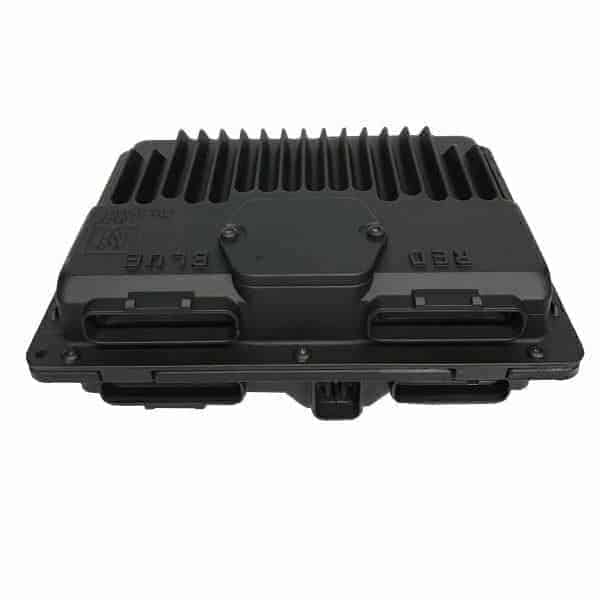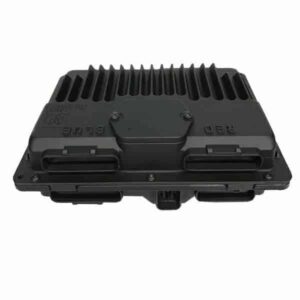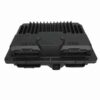Restore Your GM Truck’s Performance with a Programmed PCM
Is your trusty 1998 Chevy Blazer, GMC Jimmy, or another classic GM truck giving you headaches? If you’re dealing with a persistent Check Engine light, rough idling, stalling, or erratic transmission shifting, the problem often points directly to a failing Powertrain Control Module (PCM). As a technician with over two decades of experience under the hood, I’ve seen how a faulty PCM can cripple an otherwise solid vehicle. This isn’t just an inconvenience; it affects your fuel economy, emissions, and overall drivability. This tested, OEM PCM is your direct, reliable solution, programmed specifically for your vehicle to restore its factory performance.
From the Diagnostic Bay: The Intermittent No-Start Mystery
I remember a 1998 GMC Jimmy S15 that came into my shop with a frustratingly intermittent no-start condition. The owner had already replaced the battery, starter, and fuel pump. The scan tool showed no hard codes, but live data revealed erratic sensor readings right before it would fail to start. After ruling out wiring issues, we suspected the PCM. The internal processors on these units can weaken over time, especially from heat cycles, causing bizarre, untraceable symptoms. We swapped in a pre-programmed PCM like this one. The key was the pre-programming; it saved the customer a tow to the dealership and hundreds in programming fees. The truck fired up instantly, and the problem never returned. It’s a perfect example of how the right part, correctly prepared, is the most efficient fix.
Is Your GM Truck Showing These Red Flags?
A failing PCM can manifest in numerous ways. If your vehicle is experiencing any of the following, it might be time for a replacement. Catching it early can prevent damage to other components, like your catalytic converter.
- ✔ Check Engine Light is on with codes like P0601 (Internal Control Module Memory Check Sum Error) or P0605 (Internal Control Module ROM Error).
- ✔ The engine cranks but refuses to start.
- ✔ Unexplained drops in fuel efficiency.
- ✔ Harsh or delayed shifting from the automatic transmission.
- ✔ Stalling for no apparent reason, either at idle or while driving.
- ✔ The vehicle fails an emissions test.
- ✔ Noticeable loss of engine power and poor acceleration.
A Straightforward Guide to PCM Installation
Replacing your 1998 Blazer S10 PCM is a job most DIY enthusiasts can handle with basic tools. Because we program the module to your VIN before shipping, you can skip the expensive trip to the dealer. Just follow these steps carefully.
- Safety First: Always disconnect the negative terminal from your vehicle’s battery and wait at least 10 minutes to ensure all systems are powered down.
- Locate the Old PCM: On most of these trucks and SUVs (like the Blazer, Jimmy, and S10), the PCM is located in the engine bay, often on the driver’s or passenger’s side fender wall or near the battery.
- Disconnect the Connectors: Carefully unclip the wiring harness connectors from the old PCM. These connectors have locking tabs; be gentle to avoid breaking them. There are typically 3 or 4 color-coded connectors.
- Remove the Old Module: Unbolt the old PCM from its mounting bracket. It’s usually held in place by a few 10mm bolts.
- Install the New PCM: Mount your new, pre-programmed PCM onto the bracket and securely fasten the bolts.
- Reconnect Everything: Plug the wiring harness connectors into the corresponding slots on the new PCM. You’ll hear a click when they are fully seated. Reconnect the negative battery terminal.
- Perform Security Relearn: Your vehicle’s anti-theft system (PassLock/VATS) needs to sync with the new PCM. See our FAQ section for the simple 10-minute relearn procedure. This step is crucial!
Will This Fit My Vehicle? Verified Compatibility List
This PCM, identified by part number 9355699, is a direct replacement for a wide range of GM trucks, vans, and SUVs. It is also interchangeable with part numbers 16266645, 16250279, 16258815, 09366810, and 9366810. Please verify your vehicle is on this list before ordering. Providing your VIN at checkout is essential for us to ensure perfect programming for your specific application.
This module fits, but is not limited to, the following 1998-1999 vehicles with matching ID 9355699:
- Chevrolet Blazer S10 & GMC Jimmy S15 (1998, 4.3L)
- Chevrolet & GMC Pickups (1500, 2500, 3500)
- Chevrolet Suburban & Tahoe / GMC Yukon
- Chevrolet Express & GMC Savana Vans (1500, 2500, 3500)
- Chevrolet Astro & GMC Safari Vans
- Oldsmobile Bravada, GMC Envoy, Isuzu Hombre (1998, 4.3L)
- Cadillac Escalade (1999)
This is the reliable, cost-effective way to get your truck back to peak operating condition. We stand behind our programming and the quality of our tested OEM parts.
Frequently Asked Questions
How does the programming process work?
After you place your order, you’ll need to provide us with your vehicle’s 17-digit VIN. We use this VIN to load the latest, most stable GM-approved software calibration directly onto the PCM. This ensures it communicates perfectly with your engine, transmission, and other modules.
What is a “security relearn” and will I need to do one?
Yes, a security relearn is required. It’s a simple procedure that syncs the new PCM with your vehicle’s anti-theft system. It typically involves turning the key to the ‘ON’ position for 10 minutes, then ‘OFF’ for 10 seconds, and repeating this two more times. Your vehicle will not start until this is completed.
Is this a new part?
No, this is a thoroughly tested, used OEM (Original Equipment Manufacturer) computer sourced from a salvaged vehicle. We guarantee its functionality and program it with fresh software, offering a reliable and affordable alternative to a brand-new dealer part.
What if my original part number isn’t an exact match to 9355699?
This module is a direct replacement for several part numbers, including 16266645, 16250279, 16258815, and 09366810. As long as your vehicle is on our compatibility list and you provide a valid VIN, we will ensure the correct software is loaded for a perfect match.
What do I do after I install it?
After physical installation and reconnecting the battery, you must perform the security relearn procedure. Once that’s done, start the vehicle and let it idle for a few minutes. It’s also a good idea to clear any old codes with a basic OBD2 scanner.



